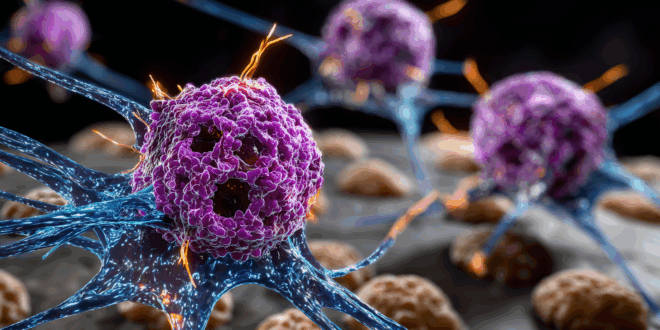Google has unveiled an AI that speaks the secret language of cells, and this new model, developed with Yale University, could fundamentally change the approach to cancer treatment.
On October 15, 2025, Google and Yale University introduced an unprecedented AI model aimed at understanding living cells. This AI from Google will decode their biological language to uncover new therapeutic avenues against cancer. Researchers have already identified a medication that can make hidden tumors more detectable by the immune system.
An AI from Google That Discovers a New Pathway Against Cancer
Google has introduced C2S-Scale 27B, an AI model with 27 billion parameters. Developed in collaboration with Yale University, this technology is part of the Gemma family, open-source models created by Google DeepMind and Google Research to understand the language of individual cells.
By analyzing single-cell RNA sequencing (scRNA-seq) data, C2S-Scale 27B can transform the genetic information of a cell into a cellular phrase that the AI can read, comprehend, and interpret. It converts biological chaos into usable data, revealing behaviors or anomalies that escape human observation.
We’re helping identify cancer cells that hide from the body’s immune system. 🧬
Built on our Gemma family of open models, C2S-Scale 27B has identified a new potential pathway for cancer therapy – a hypothesis we validated in the lab with scientists at @Yale University. 🧵 pic.twitter.com/gvuAnDW3c4— Google DeepMind (@GoogleDeepMind) October 17, 2025
One of the significant challenges in immunotherapy is what are known as cold tumors. These cancer cells remain hidden from the immune system as they do not display the necessary protein signatures for recognition. C2S-Scale 27B has delved into this mystery and made a remarkable prediction: an existing drug, Silmitasertib, could help make these tumors visible.
This compound, which is already recognized in other treatments, had never been studied for its effects on antigen presentation (MHC-I). This is a crucial mechanism for cell recognition by the immune system.
As a result, laboratory tests conducted at Yale showed that the combination of Silmitasertib and low-dose interferon increased the visibility of cancer cells to the immune system by approximately 50%. However, Google and Yale are proceeding with caution. While these results indicate a promising avenue, validated experimentally, the journey towards clinical therapy is still long.
Furthermore, researchers are already testing other predictions generated by the model in various immune contexts. In the meantime, the C2S-Scale 27B model and its resources are now available to the scientific community.




